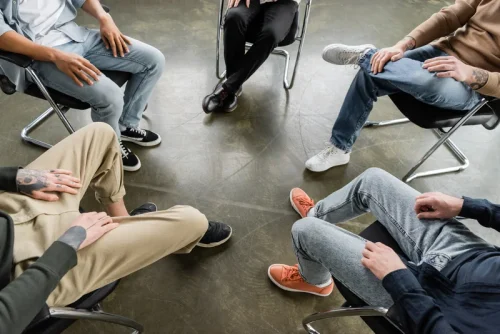Drones Could Transform Emergency Response to Opioid Overdoses The George Washington University

But in general, withdrawal happens more often in people using opioids daily for longer than two weeks, especially more than 90 days. During the detoxification phase, The Recovery Village strives to make patients as signs of opioid addiction comfortable as possible during withdrawal. During this critical phase, medical professionals carefully monitor each patient, ensuring the medical stabilization of the body. Depending on a person’s needs, the medical team may give the person taper medications or detox drugs to ease discomfort. Withdrawal may be done at home, but it should take place under the guidance of your healthcare provider.
What is opioid use disorder?
Then, a bystander can administer the medicine with the guidance of a health professional who is observing the scene with the use of the live-video component on the drone. To determine whether drones could respond quicker in cases of overdoses, Lejeune analyzed overdose data spanning two and a half years between 2017 and 2019 in the city of Virginia Beach, Virginia. He input that data into a prescriptive analytics mathematical model to determine what the response time would have been if drones were used. The trial’s findings also indicated a significant decrease in the use of benzodiazepines—by 2.3%—further supporting the effectiveness of the guideline-based training intervention in promoting safer treatment options. A person’s metabolism is also going to play a role in how long it takes methadone to process out of the body. The faster methadone is metabolized, the sooner withdrawal starts.
Treatment Resource
Given that ibogaine is illegal in the USA and many other countries, it has not been studied in high-quality, randomised clinical trials; thus current evidence is restricted to open-label and retrospective studies. In one retrospective chart review of patients undergoing medically supervised withdrawal with ibogaine in an inpatient setting and two prospective open-label studies, withdrawal symptoms decreased substantially. Although α2 agonists and full or partial μ-opioid receptor agonists have shown efficacy in alleviating withdrawal symptoms, future research should be directed towards managing withdrawal in the context of the desired outcome.

What Does Opioid Withdrawal Feel Like?
Several opioid cases have settled while a trial was ongoing, including one in Washington state that ended with a $518 million payout from drug companies at the close of evidence in a six-month trial. Baltimore’s overdose death rate is nearly double that of any other major American city, a Baltimore Banner/New York Times investigation found this year. Signs of the crisis are everywhere, as the city’s lawyers have emphasized to jurors at the opioid trial. But certain symptoms can last up to three weeks or more in people who’d used marijuana very often.
How to Recognize and Manage the Symptoms of Post-Acute Withdrawal Syndrome

Our representatives can answer your questions and guide you toward treatment in your area. Your call will be confidential, and you don’t have to commit to a program to learn more about treatment options. There are some medications available to help ease the withdrawal and detox process.

The American Society of Addiction Medicine (ASAM) recommends using medication to treat the symptoms of opioid withdrawal. Opioid withdrawal symptoms generally become progressively more severe as opioids leave the body. The half-life of a drug can help predict when these cravings will begin.
Opioid Withdrawal Symptoms, Timeline, and Detox Treatment
Knowing what to expect and how to manage the symptoms can help you feel better and, as a result, reduce your risk of relapse. Is a 42-year-old female who works at the post-office and is married with two young kids. She has been in recovery for opioid addiction for over 10 years and takes buprenorphine/naloxone (Suboxone) every day to prevent cravings, prevent overdose, and help her feel “normal” so she can work and take care of her kids. While setting up camp, her backpack got flung open and her medications, including her buprenorphine/naloxone (Suboxone), spilled out.

What medications are available to help with opioid withdrawal symptoms?
- When you use marijuana products, your body and brain become used to THC (tetrahydrocannabinol).
- They may be more psychological than physical, including mood swings and difficulty with sleep and memory, for example.
- This involves very gradual tapering and frequent check-ins to reassess how the tapering process is going to minimize withdrawal symptoms.
- This is the major psychoactive component of marijuana that has addiction potential.
We strive to create content that is clear, concise, and easy to understand. Having the right medical support can make it easier and improve the chances of a positive outcome.
Understanding the Taper Process
Importantly, physical dependence with tolerance and withdrawal alone do not mean someone has an opioid use disorder. You may not be able to prevent opioid withdrawal, but you can take steps to avoid severe symptoms. If you use opioids for any reason and are worried about withdrawal, ask your healthcare provider for help. And getting help for your symptoms may keep you from developing opioid use disorder, or help you to begin to recover.



